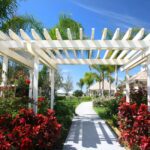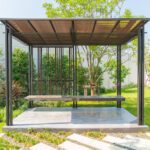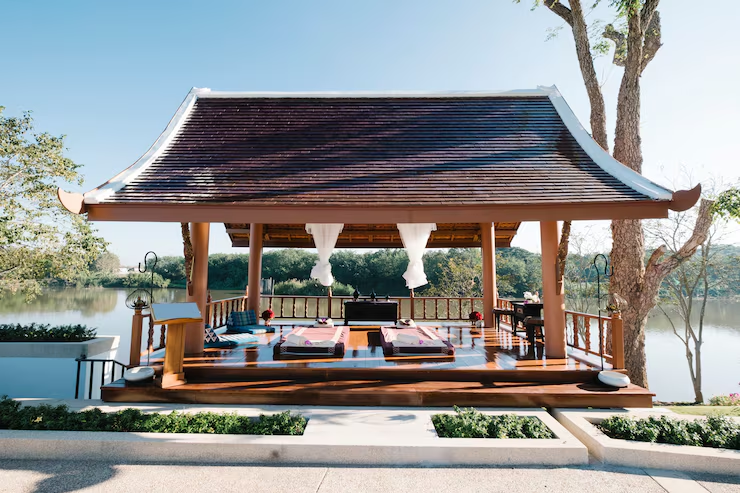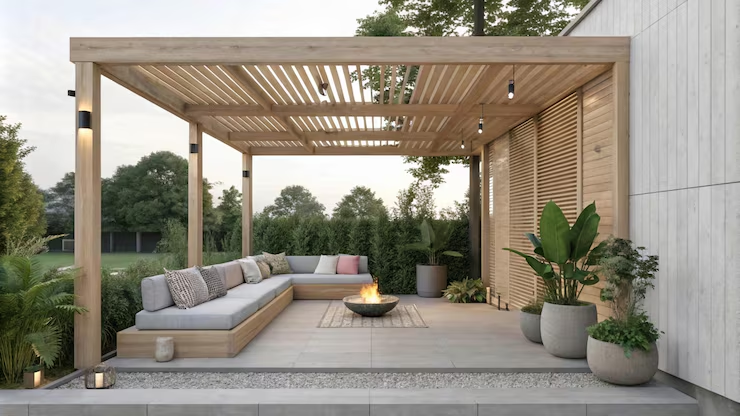Connecticut homeowners value the charm of outdoor living, especially during the warmer months when patios, decks, and gardens become extensions of the home. However, fluctuating weather conditions can limit how often these spaces are used comfortably. That’s where motorized awnings come in—offering shade, protection, and convenience at the push of a button, all while adding style and potential value to a property.
Here are five reasons why installing motorized awnings in Connecticut is a smart investment.
Table of Contents
1. Boosts Outdoor Comfort and Usability
2. Increases Energy Efficiency
3. Adds Convenience and Modern Appeal
4. Increases Home Value and Curb Appeal
5. Withstands Local Weather With Durable Design
How Motorized Awnings are Installed
How to Choose the Right Motorized Awning for a Connecticut Home
How to Extend the Life of Motorized Awnings
Frequently Asked Questions (FAQs)
Transform Outdoor Spaces with Durkin’s Expertise
| Key Takeaways ✔ Motorized awnings in Connecticut enhance outdoor comfort by providing instant shade and weather protection. ✔ Motorized awnings help lower indoor temperatures and reduce energy bills through effective sun control. ✔ Modern features like remote controls and wind sensors add convenience and safety. ✔ Awnings boost curb appeal and can increase home value with stylish, functional upgrades. ✔ Durable materials ensure motorized awnings withstand Connecticut’s changing weather. ✔ Professional installation ensures secure mounting, proper wiring, and long-term reliability. ✔ Regular care and seasonal maintenance extend the life and performance of motorized awnings. |
1. Boosts Outdoor Comfort and Usability
Motorized awnings in Connecticut make it easier to enjoy outdoor spaces without worrying about sudden sun or rain. These awnings provide fast, push-button coverage, letting patios and decks become true living areas. This upgrade allows families to get more value out of their backyard setups throughout spring, summer, and fall.
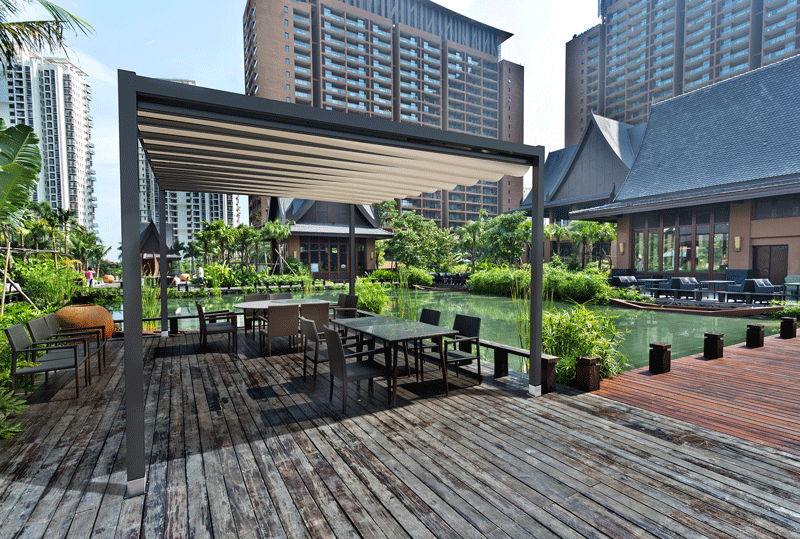
How Motorized Awnings Improve Day-to-Day Outdoor Living
- Shields From Harsh Midday Sun: Connecticut summers can bring intense heat during peak hours. A motorized awning provides shade instantly, reducing sun exposure and creating a more pleasant place to relax or entertain.
- Protects Furniture From UV Damage: Prolonged sun exposure fades cushions, warps wood, and cracks plastic surfaces. With motorized awnings in Connecticut, outdoor furniture lasts longer and looks better thanks to built-in UV protection.
Offers Shelter During Light Rain: A drizzle shouldn’t end a meal or gathering on the patio. With a motorized awning extended, outdoor activities can continue comfortably under a protective cover.
2. Increases Energy Efficiency
Installing motorized awnings in Connecticut can make a noticeable difference in how a home handles heat. By providing targeted shade, these awnings help reduce indoor temperatures, lowering the strain on cooling systems. This leads to both energy savings and a more comfortable home environment.
How Motorized Awnings Reduce Energy Use and Cooling Costs
- Blocks Solar Heat Gain Through Windows: South- and west-facing windows absorb the most sunlight during summer. When extended, motorized awnings in Connecticut shade these areas and reduce the amount of heat entering the home.
- Reduces Air Conditioning Load: Shading key parts of the house keeps indoor temperatures from rising quickly. As a result, HVAC systems don’t work as hard, helping cut energy use and extend the life of cooling equipment.
Lowers Utility Bills Over Time: Small improvements can lead to big savings across the seasons. Homeowners often notice reduced monthly utility bills after installing motorized awnings, especially during peak cooling months.
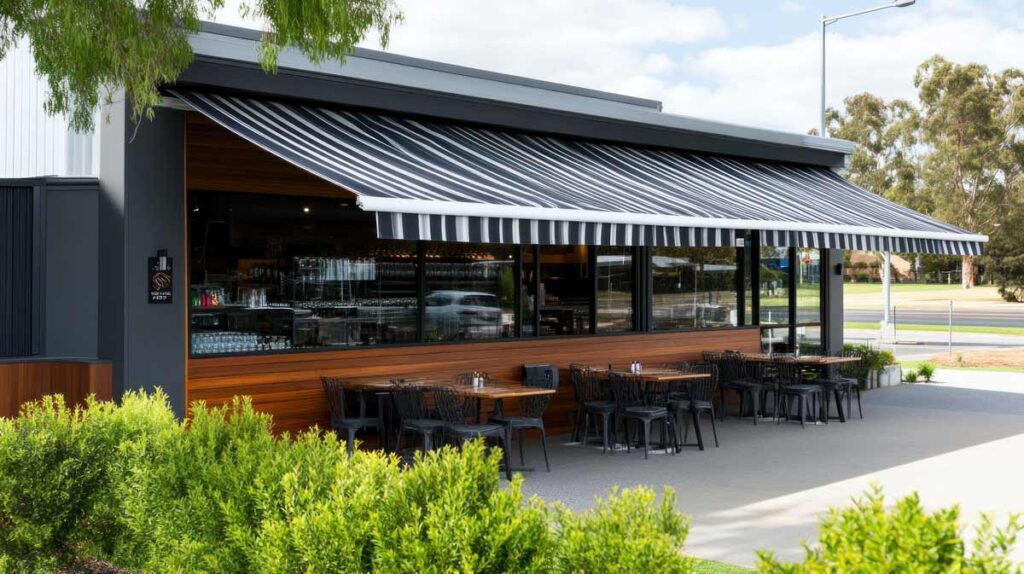
3. Adds Convenience and Modern Appeal
Motorized awnings in Connecticut offer the kind of ease and control modern homeowners expect. With automated features and sleek designs, these awnings can be a part of a smart and stylish home setup. The result is a seamless blend of comfort, technology, and aesthetics.
How Motorized Features Create a Better User Experience
- Operates With the Push of a Button: No cranks or manual effort required. With a remote or wall switch, users can extend or retract the awning in seconds.
- Includes Smart Sensor Options: Some motorized awnings in Connecticut come with sun, wind, or rain sensors. These sensors adjust the awning automatically based on weather conditions, offering hands-free protection and peace of mind.
4. Increases Home Value and Curb Appeal
A home with thoughtfully installed features stands out. Motorized awnings in Connecticut do more than provide function—they enhance a property’s visual appeal and market value. Whether the goal is long-term living or preparing for resale, this kind of upgrade adds lasting value.
Why Motorized Awnings are a Smart Investment
- Creates a Polished, High-End Look: Retractable awnings offer a finished appearance that elevates patios and decks. Matching fabric colors and custom fits improve curb appeal and tie outdoor spaces together.
- Appeals to Buyers Seeking Modern Comforts: Homebuyers are drawn to smart, energy-efficient features. A motorized awning signals thoughtful upgrades and offers a lifestyle benefit that many buyers appreciate.
- Expands Usable Square Footage: Covered outdoor areas feel like an extra room. With motorized awnings in Connecticut, patios become extensions of the home, which can influence how spacious a property feels.
- Blends With Modern Architecture: Today’s motorized systems are designed to look clean and minimal. Hidden hardware and color-matched components make these awnings a natural extension of modern home styles.
5. Withstands Local Weather With Durable Design
Connecticut’s weather can be unpredictable, but motorized awnings are built to handle it. Designed with strong frames, weather-resistant fabrics, and smart retraction systems, they offer long-term reliability. These awnings provide peace of mind along with comfort and style.
How Motorized Awnings Stand Up to Connecticut’s Climate
- Made With High-Quality, Weather-Resistant Materials: Most awnings feature treated acrylic or vinyl fabrics that resist fading, mold, and moisture. The frames are often aluminum, which won’t rust and hold up under pressure.
- Retracts Easily During Storms or High Winds: Unlike fixed awnings, motorized versions can be quickly retracted to avoid storm damage. Many models even retract automatically when wind sensors detect dangerous conditions.
Requires Minimal Maintenance for Longevity: Motorized awnings in Connecticut are built to last with only basic upkeep. Seasonal cleaning and occasional servicing keep systems running smoothly year after year.
How Motorized Awnings are Installed
With the awnings market projected to grow to USD 15,960.31 million by 2032, installing motorized awnings in Connecticut is becoming an increasingly popular upgrade. While each home and setup is different, most installations follow a clear series of steps to ensure safety, performance, and visual appeal.
Knowing what to expect can help homeowners feel more confident and prepared before the project begins.
1. Evaluating and Measuring the Site
A professional will visit the home to assess the outdoor space and discuss goals for shade coverage. This includes checking wall surfaces, electrical access, and measuring the exact dimensions needed for the motorized awning. In Connecticut, it’s common for installers to consider sun angles and seasonal weather patterns to recommend the most effective placement.
2. Choosing the Right Motor and Controls
Motorized awnings in Connecticut come with different types of motors—some hardwired, others plug-in or solar-powered. Homeowners can also choose remote controls, wall switches, or smart system integration. The installer helps match the motor system to the home’s electrical setup and the owner’s preferences.
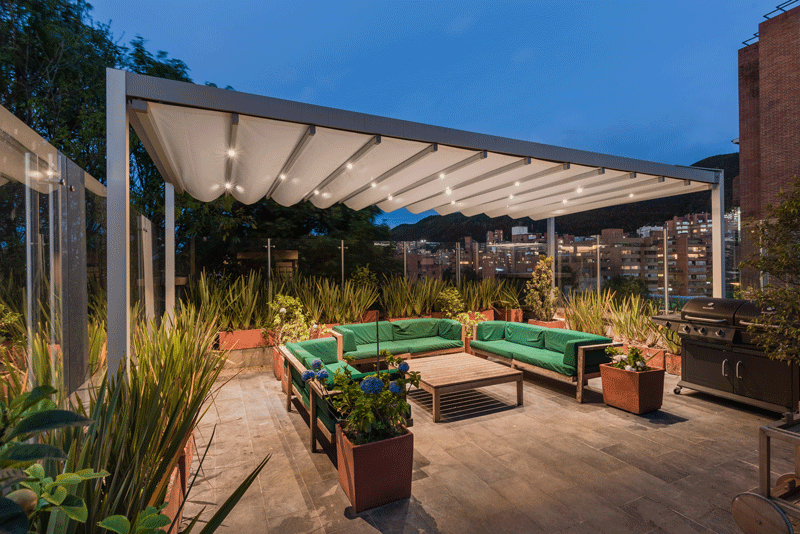
3. Selecting Fabric and Frame Options
Installers guide homeowners through fabric choices, including UV-resistant acrylics or vinyl options that stand up well to New England weather. Color, pattern, and durability are all discussed, along with powder-coated frame finishes that match the home’s exterior. Since motorized awnings in Connecticut need to handle sun, wind, and rain, quality materials are a top priority.
4. Preparing the Mounting Surface
Before the awning is attached, installers prep the mounting area to ensure it can support the weight of the frame and motor. This may include reinforcing wood beams, drilling anchor points, or sealing gaps to prevent water intrusion. For many Connecticut homes, extra attention is paid to older siding or non-standard wall materials.
5. Electrical Work and Motor Setup
The motor unit is wired or connected according to the home’s layout and the type of system chosen. Licensed electricians may be brought in to handle dedicated outlets or circuit additions. This step ensures the motorized awning operates smoothly and safely for years to come.
6. Testing and Final Adjustments
Once installed, the motorized awning is tested for full range of motion, tension settings, and responsiveness to controls. Installers also walk homeowners through how to use the system, maintain it, and spot any issues early. In Connecticut, some models may be tested with built-in wind sensors or timers to demonstrate added automation features.
How to Choose the Right Motorized Awning for a Connecticut Home
A retractable awning generally costs between $2,000 and $3,500, so finding the right fit for motorized awnings in Connecticut involves more than just choosing a style. The ideal choice should balance climate, architecture, materials, and long-term goals for the space to ensure lasting value. Knowing what to look for helps homeowners make smart decisions that enhance comfort without overspending.
1. Consider the Direction of Sun Exposure
Homes facing south or west receive the most direct sunlight, which can heat interiors and fade furniture. A wider motorized awning can offer better shade in those areas, especially during peak afternoon hours. In Connecticut, where summer sun can be intense, this choice directly impacts comfort and energy savings.
2. Choose Weather-Resistant Fabrics
Motorized awnings in Connecticut need to handle wind, rain, and occasional snow exposure. Acrylic fabrics are often preferred for their durability, mold resistance, and colorfastness over time. Vinyl-coated options may also work well for homeowners prioritizing easy cleanup and long-term wear.
3. Match the Frame Style to the Home’s Architecture
Awnings should complement—not clash with—a home’s exterior design. Modern homes often pair well with sleek, minimalist frames, while traditional houses may look best with curved or decorative brackets. Powder-coated aluminum is a common choice in Connecticut because it resists rust and blends with siding or trim colors.
4. Decide Between Wall-Mounted or Roof-Mounted Units
Some motorized awnings attach directly to walls, while others require roof brackets, depending on height and structure. Wall mounts are simpler but may limit size or angle; roof mounts offer more flexibility for clearance and sun angle. Connecticut homes with low eaves or overhangs often benefit from the latter.
5. Think About Wind Sensor and Smart Features
Technology has advanced, and many motorized awnings now offer wind sensors, timers, or smartphone control. These features add convenience and protect the awning during sudden weather shifts. For Connecticut homeowners, automation can be especially useful in avoiding damage from unexpected gusts or storms.
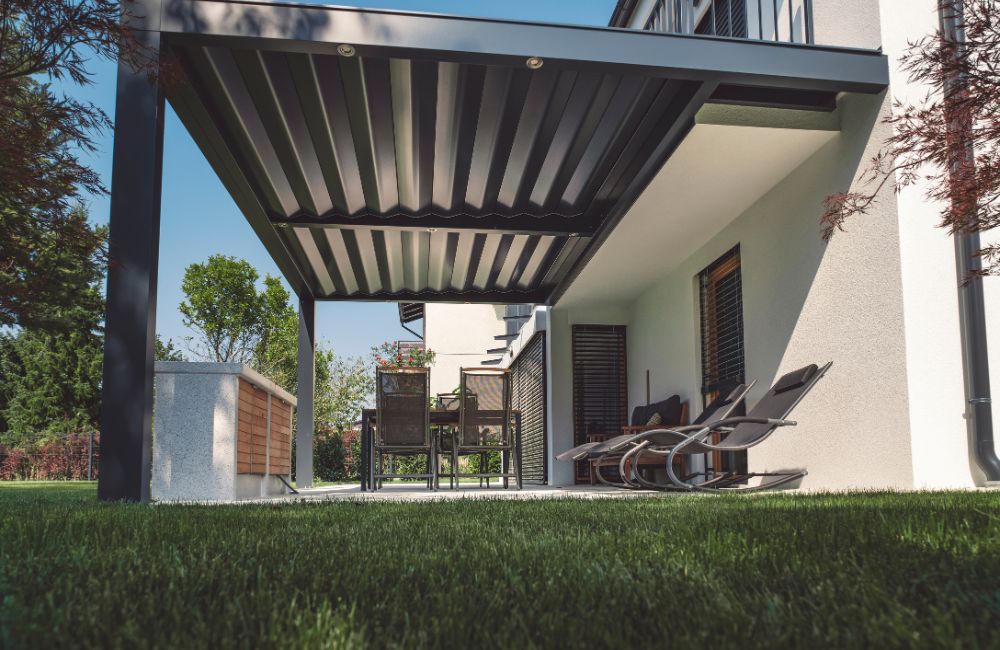
6. Set a Budget That Balances Quality and Features
Costs for motorized awnings in Connecticut can vary based on size, fabric, motor type, and extra features. It’s important to balance upfront cost with durability and long-term savings from energy efficiency and reduced maintenance. A professional installer can help identify options that meet both needs and budget.
How to Extend the Life of Motorized Awnings
Motorized awnings in Connecticut are built for durability, but like any outdoor feature, they last longer with regular care. Seasonal cleaning, mindful use, and occasional maintenance go a long way in keeping them looking and working like new. A little attention now can help avoid bigger repairs later.
1. Clean the Fabric Seasonally
Dirt, pollen, and bird droppings can stain awning fabric if left too long. Cleaning with a soft brush and mild soap every spring and fall helps maintain appearance and prevent buildup. Most fabrics used in motorized awnings in Connecticut resist mildew, but only if kept clean and dry.
2. Rinse and Dry After Heavy Storms
Rain mixed with debris can leave streaks or deposits on both the fabric and frame. It’s a good idea to rinse the awning after storms and allow it to dry fully before retracting. This simple habit protects the material and motor from moisture-related wear.
3. Inspect the Frame and Hardware Twice a Year
Check bolts, brackets, and arms for signs of rust, looseness, or wear—especially after winter. Tighten connections and look for any misalignment in the support arms. In Connecticut, freeze-thaw cycles can shift or weaken hardware over time.
4. Test the Motor and Controls Regularly
Motorized awnings in Connecticut may sit unused during cold months, so it’s important to run the motor every few weeks in warmer seasons. Test remote controls, wall switches, and any smart functions to catch issues early. If the motor seems slow or noisy, a technician can check it before bigger problems develop.
5. Retract During Strong Winds or Snow Forecasts
Even high-quality awnings aren’t designed to withstand storms or heavy snow loads. Retracting the awning in advance helps protect both the frame and motor. Some Connecticut homeowners add wind sensors to automate this step for peace of mind.
6. Schedule Professional Maintenance Every Few Years
A certified technician can inspect the motor, wiring, and structural components thoroughly. They may lubricate moving parts or replace small pieces before they fail. For motorized awnings in Connecticut, routine service helps ensure safety and extends the product’s usable life.
Frequently Asked Questions (FAQs)
Yes, motorized awnings in Connecticut can be mounted on brick, stone, or other masonry surfaces with the right anchors and hardware. A professional installer will use masonry-specific tools to ensure the awning is securely attached. It’s important to evaluate wall stability before installation to avoid long-term issues.
Motorized awnings should be kept at a safe distance from high heat or open flames to prevent damage. In Connecticut homes with outdoor kitchens, it’s best to install the awning away from direct cooking zones or opt for heat-resistant materials. Proper placement ensures safety and keeps the fabric and motor working properly.
Most modern motorized awnings in Connecticut are designed to operate quietly with minimal motor noise. A gentle hum during extension or retraction is normal, but loud grinding sounds may indicate a mechanical issue. Regular maintenance helps keep operation smooth and nearly silent.
Motorized awnings are not designed to handle heavy snow loads and should be retracted during winter in Connecticut. Snow accumulation can strain the frame and motor, potentially causing permanent damage. For winter protection, fixed or seasonal covers are better suited than retractable awnings.
Some homeowners’ associations in Connecticut have rules about exterior colors, including awning fabrics. It’s a good idea to check HOA guidelines before ordering a motorized awning to avoid conflicts. Many manufacturers offer a wide range of approved neutral tones to match community standards.

Transform Outdoor Spaces with Durkin’s Expertise
Durkin’s brings decades of trusted craftsmanship to every motorized awning installation in Connecticut, helping homeowners turn patios and decks into usable, stylish retreats. Our team combines high-quality materials with tailored design to ensure each awning fits the home and stands up to New England’s changing seasons. From smart automation to weather-resistant fabrics, Durkin’s delivers comfort and control at the touch of a button.
Get in touch today to create a shaded space that feels like an extension of the home.



